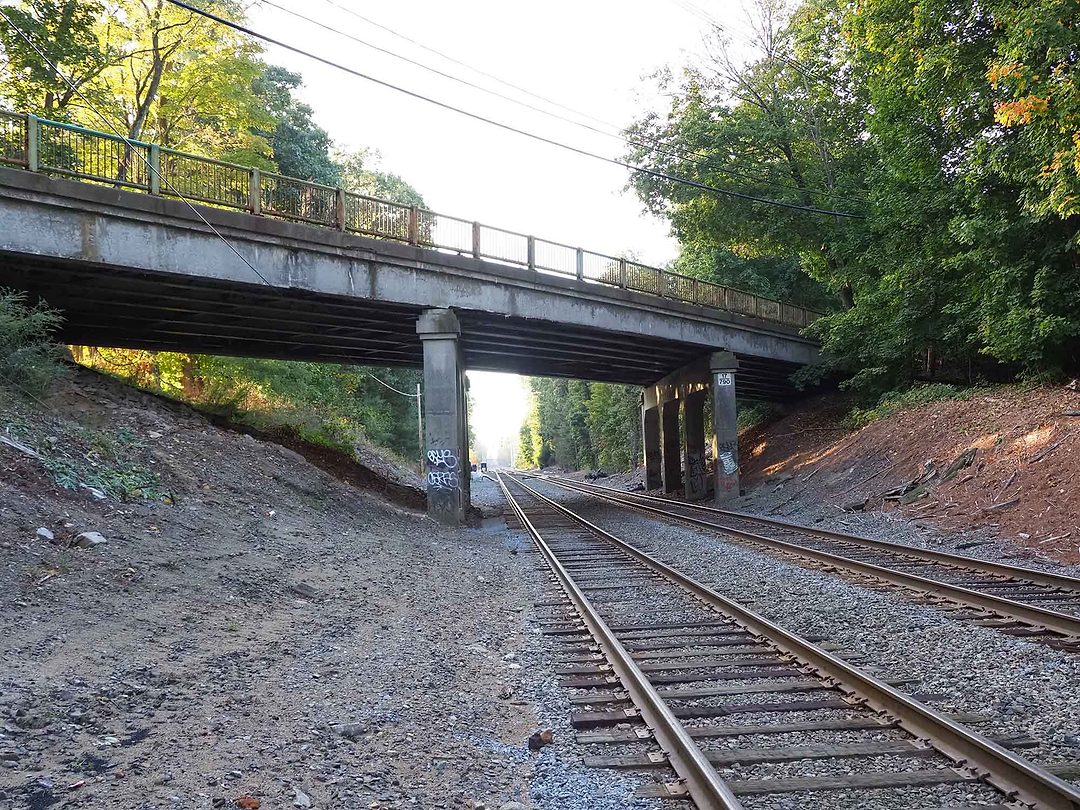The blood-stained car of the Juggernaut
O’er millions of necks hath rolled
And the priests have cried, ‘Such a triumph as ours
The world shall never behold!’
But wo! When this harnessed Dragon
Comes vomiting smoke and fire
For the priests with their car and idols,
Shall perish beneath his ire!
From “The Railway Car” published in The Liberator, Boston, February 11, 1853
On Rt. 126, as you pass Walden Pond, cross into Lincoln, and dip through wooded drumlins, the road soon rises and straightens out by Baker Bridge Road along the expansive fields of The Food Project’s Baker Bridge Farm. The railroad bridge is straight ahead. Small and easy to miss, it was once the location of the tiny Baker Bridge railway station. It was also one of the deadliest spots in 19th century Massachusetts.
A chilling and sardonic December 10, 1856, entry in Henry Thoreau’s journal reads, “Yesterday I walked under the murderous Lincoln Bridge, where at least ten men have been swept dead from the cars within as many years. I looked to see if their heads had indented the bridge, if there were sturdy blows given as well as received, and if their brains lay about.”1
The Concord Freeman, Boston’s Liberator as well as The Annual Report of Massachusetts Railroad Corporations confirmed in print:
June 22, 1847: “A brakeman was knocked off the car by standing on top of it when approaching a bridge in Lincoln; he had just been warned by the conductor not to stand up; he lived a few days and then died of the injuries he received.”
February 4, 1849: “A brakeman by the name of Whitcomb was killed by coming in contact with a bridge in Lincoln, while carelessly standing top of the cars, contrary to the rules of the road.”
‘The road’ was the Fitchburg Railroad, which opened to Concord for the first time in June 1844. The tracks to Fitchburg took another year to complete. In Concord, the arrival of the railroad revolutionized transportation and commerce overnight. Travel time to Boston was cut by more than half. Traditional canal and flatboat commerce along with turnpike hauling quickly waned, as did business at the Middlesex Hotel in Concord’s town square. Field laborers on the outskirts of town marked the time of day by the screams of steam whistles echoing over the land. “The nation itself…It lives too fast,” Thoreau journaled on August 9, 1854.

Fitchburg Locomotive No. 212
| Public domainThe reports continued:
April 19, 1849: ”A milkman got on top of the cars to sweep snow off between South Acton and Concord and persisted in remaining there after being told to get down. His head came into contact with a bridge, and he was instantly killed.”
In comparison, Thoreau’s 1856 journal entry references the only execution ever carried out in Concord: the hanging of Samuel Smith in 1799. “I felt a curiosity to see this famous bridge, naturally far greater than my curiosity to see the gallows on which Smith was hung, which was burned in the old courthouse, for the exploits of this bridge are ten times as memorable. Here they are killed without priest, and the bridge, unlike the gallows, is a fixture…The days of the gallows are numbered. The next time this county has a Smith to dispose of, they have only to hire him out to the Fitchburg Railroad Company. Let the priest accompany him to the freight-train, pray with him, and take leave of him there.”2
 ©istock.com/Duncan1890
©istock.com/Duncan1890In a span of just nine weeks during 1850, the Fitchburg Railroad Corporation recorded:
September 7, 1850: “A brakeman was killed by a bridge, between Concord and Lincoln, while standing on top of the cars.”
October 14, 1850: “A brakeman on the Fitchburg Railroad, named Uline, a Frenchman, was knocked from the downward freight train by a bridge near Concord on Monday afternoon and instantly killed.”
November 12, 1850: “A brakeman was killed by a bridge in Lincoln, while standing on top of the cars.”
Thoreau describes this bridge, along with another in Concord as, “… our modern Dragons of Wantley. Boucaniers of the Fitchburg Railroad, they lie in wait at the narrow passes and decimate the employees. The Company has signed a bond to give up one employee at this pass annually. The Vermont mother commits her son to their charge, and when she asks for him, again the Directors say: “I am not your son’s keeper. Go look beneath the ribs of the Lincoln Bridge.”3
The continued carnage was costly and extensive. In 1848, the Boston Traveller reported on the following abstract, presented to the Massachusetts State Legislature regarding injuries and fatalities on Massachusetts ‘roads’ over the prior 8 years:
• 42 passengers killed, 69 injured
• 75 employees killed, 72 injured
• 155 other persons killed, 185 injured
• Killed or injured at crossings, 20, by bridges 36
• Compensation paid by the companies: $155,467.16

Image from the 1905 Baker Bridge Train Wreck
A man from Chicopee, MA was awarded $10,000 in 1850 (over $400,000 in today’s dollars) for an 1848 accident in which he was severely injured. In 1849, the New Hampshire legislature limited jury verdicts to a $5,000 maximum penalty for loss of life on any of their state railroads. Also in 1849, some English railway companies began offering their riders optional one-day life insurance policies.
Not only were the railroad companies paying compensation to the families of those killed and injured along the tracks, but they also paid significant dividends to stockholders. The Fitchburg Railroad Corporation posted yearly dividends of between six and eight percent through the 1850s. In 1855, Ralph Waldo Emerson detailed in a letter to his attorney, Abel Adams, how he managed his income and debts seasonally, counting on lecture income in one season and, partially, on railroad dividends in another. Emerson’s railroad income from the Vermont and Canada Railroad Company diminished with the onset of winter. “Until the middle of November,” he wrote Adams, “I live mainly by grace. For the ‘Vermont and Canada’ people dry up what should be my daily spending money.”4
On February 6, 1852, Concord’s Middlesex Freeman newspaper noted in an op-ed entitled ‘Railroads’: “There is no subject that more demands the careful attention of legislators than Railroads. At present, Railroad companies are the most lawless things in the world…The grievances go on multiplying in number and extent until there comes a breakdown of tremendous character. Half a score of persons are killed, twice as many more or less injured, the train is smashed up…Strange as it may appear for all this loss of life, maiming, fright and destruction of property, no one is to blame or can be made to appear blameworthy.”
September 5, 1854: “Norman Snell, a brakeman on a freight train, was knocked from the train at the bridge in Lincoln and killed.”
November 24, 1855: “A brakeman named Boynton, while on top of the cars, hit a bridge near Lincoln.”
The tragedies did not end with the safety measures eventually implemented by the Fitchburg Railroad in the latter half of the 19th century. In 1905, a crash at Baker Bridge killed 15 passengers, two employees and injured 32 others when an outbound train ran into another stopped on the tracks.
As Henry Thoreau wrote in his journal on August 9, 1854: “Did you ever think what those sleepers [railroad ties] are that underlie the railroad? Each one is a man, an Irish-man or a Yankee man. The rails are laid on them, they are covered with sand, and the cars run smoothly over them. They are sound sleepers, I assure you.”
“We do not ride on the railroad; it rides upon us.”
A grateful thank you to Jaimee Joroff at Barrow Bookstore, Jessie Hopper and Anke Voss from Special Collections at the Concord Free Public Library, as well as Eric Miller for research assistance.
Sources:
1.2.3 https://archive.org/details/thoreau-journal-1906lim-ed/page/n4391/mode/2up?q=railroad+deaths
4. R.W. Emerson to Abel Adams, Sept. 21, 1855. Ralph L. Rusk, ed. The Letters of Ralph Waldo Emerson IV, 529.


